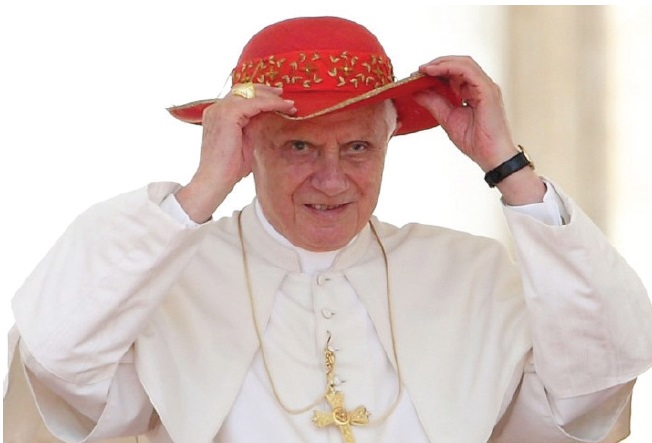The fashionable Pope
When Cardinal Joseph Ratzinger became Pope Benedict XVI in 2005, observers across the globe noted with interest that he had opted for red outdoor shoes, reviving a centuries-old tradition that had lately gone dormant. Red dress shoes, worn by anyone, are a statement.
Jan 13, 2023

When Cardinal Joseph Ratzinger became Pope Benedict XVI in 2005, observers across the globe noted with interest that he had opted for red outdoor shoes, reviving a centuries-old tradition that had lately gone dormant. Red dress shoes, worn by anyone, are a statement. But for Pope Benedict XVI, the statement may have been about his relationship with the Catholic Church — and how he saw his role in it.
His red shoes became something of a trademark, inspiring ABC News to call him a “fashionista” and Esquire to name him “accessoriser of the year.” At another point, his loafers sparked controversy after false rumours claimed they were crafted by the high-end Italian fashion house Prada.
Were they really Prada? In the end, after all those rumours and all that tongue-clucking, no. But were Benedict’s red shoes still worth all the hype and attention they garnered? Arguably, yes.
The Vatican later clarified that the shoes were custom-made for him not by Prada but by other Italian cobblers. Some were by Antonio Arellano, based in Rome. Others were by Adriano Stefanelli, in the northwest Italian city of Novara.
Historically, all popes wore red shoes — before Benedict’s predecessor, Pope John Paul II, whose tenure lasted nearly three decades, exercised his right to opt out and switched to a more demure burgundy. (They also wore red indoor slippers, before Pope Paul VI discontinued the practice, for good, in the 1960s.)
The colour has a variety of significances: Some believe it is a reminder of Jesus’ bloodied feet when he was crucified, while others believe it represents the spilled blood of Catholic martyrs.
During his nearly eight years on the throne of St Peter, Pope Benedict had always looked absolutely perfect, sartorially speaking, whether garbed in elaborate vestments for an Easter liturgy or clad in the simple but meticulously tailored white caped cassock that he wore on more ordinary occasions. He was the Duke of Windsor of popes.
Benedict would go on to revive a few other papal clothing traditions as well. In 2006, he wore a red cappello romano sun hat (also known as a saturno), a style that hadn’t been worn since before John Paul II. And that came a year after what Vatican-watchers remember as a rare internet-breaking pope fashion moment: the Christmas camauro of 2005. A few days before the holiday, at a special outdoor edition of his weekly “general audience” appearance, Benedict wore a traditional papal winter head covering, historically made of red velvet with a white ermine trim. Which looks — uncannily, adorably — like a Santa Claus hat. The style had not been worn by a pope since John XXIII, who died in 1963.
Other highlights:
-- Celebrating Mass in 2008 at Washington’s National Park stadium in a billowing scarlet satin chasuble trimmed with crimson velvet and delicate gold piping.
-- Greeting worshippers in Rome, his chasuble this time woven of emerald-green watered silk with a pattern of golden stars.
-- Canonising Kateri Tekakwitha, the first Native American saint, while attired in a fanon, a gold-and-white striped shoulder covering, dating to the eighth century, that only popes may wear.
Over the last couple of decades, the Roman Catholic Church has been besmirched with ugliness, scarred by clerical sexual predation abetted by clueless and self-promoting bishops. Benedict used beauty to demonstrate tangibly that the Catholic faith that he and the members of his Church shared is itself beautiful and indestructible, and that it shines through despite all human efforts to wreck it.
He has reminded a world that looks increasingly ugly and debased that there is such a thing as the beautiful — whether it’s embodied in a sonata or an altarpiece or an embroidered cope or the cut of a cassock — and that earthly beauty ultimately communicates a beauty that is beyond earthly things. -- Agencies







Total Comments:0